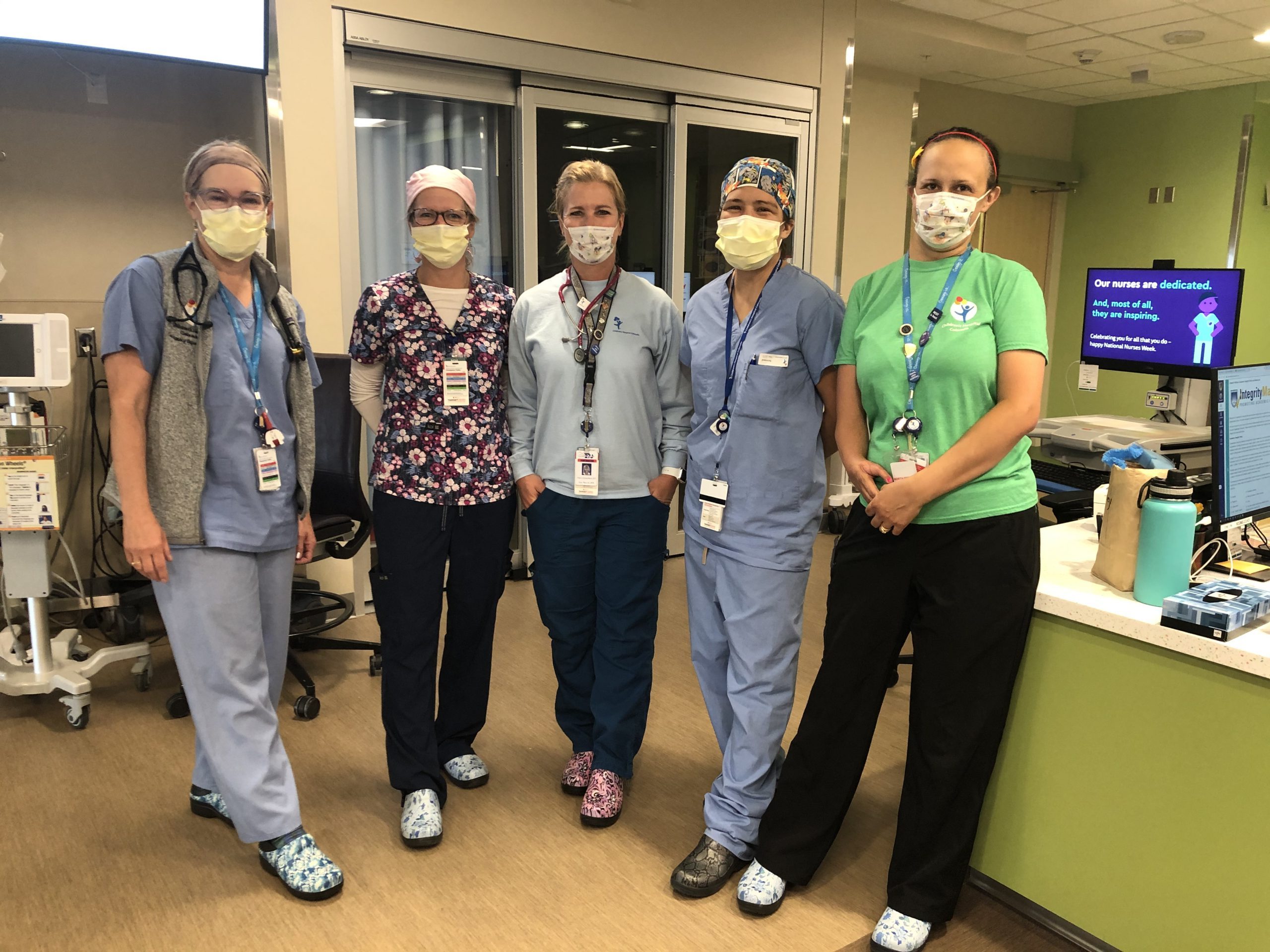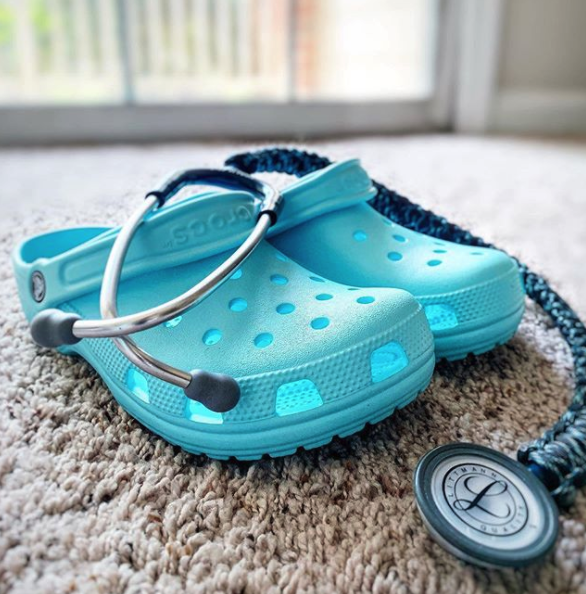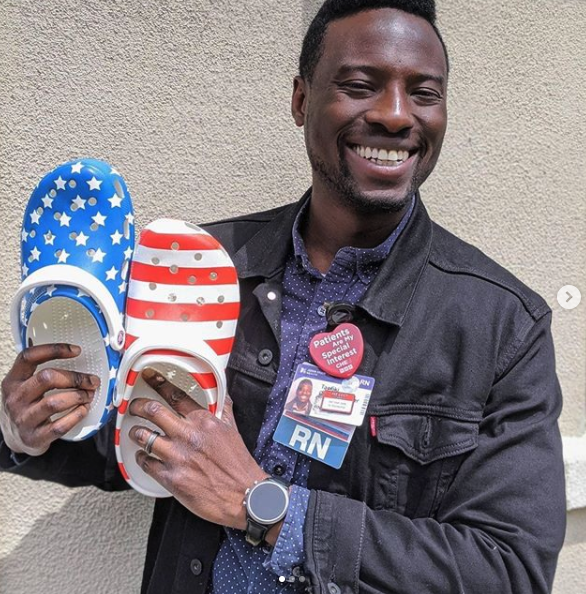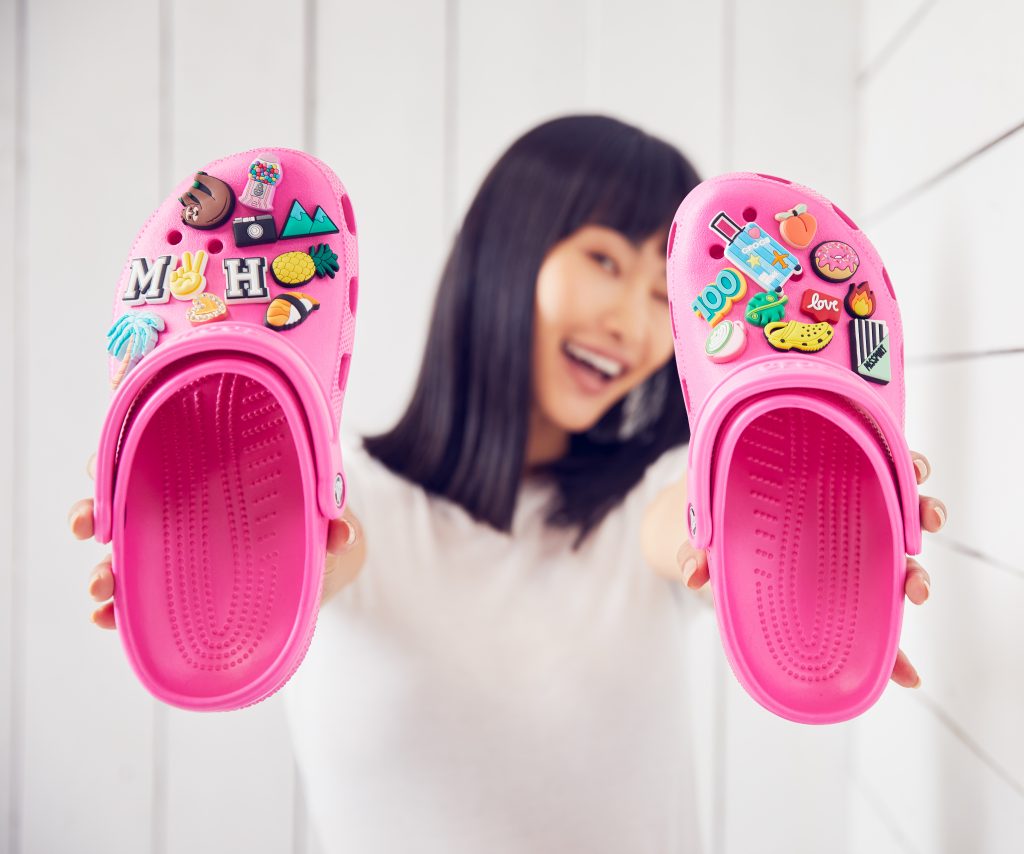
In the early days of the coronavirus pandemic, media images of health care workers caring for COVID-19 patients provided some of the first glimpses into the devastating impacts of the global crisis.
Executives at Crocs not only saw those stressed, overwhelmed frontline workers, but also started getting requests from them for shoes to keep them going during the long hours. The company realized it had an opportunity to offer a little kindness and comfort to a group of loyal customers at a particularly challenging time. Crocs came up with an ambitious idea: to give away 10,000 pairs of shoes every day to people working on the front lines of the COVID-19 epidemic.
Less than a week later, Crocs was ready to launch its “Free Pair for Healthcare” initiative, a 45-day event starting in late March during which the company donated more than 860,000 pairs of Crocs to workers mostly in the U.S., but also in Canada and Europe.

Crocs donated more than 860,000 pairs of shoes during its 45-day campaign for health care workers.
Crocs’ iconic foam clogs — in black and white, in lemon and mint and leopard print — arrived on the doorsteps of grateful health care workers and frontline responders, who posted messages and photos of their Crocs, some personalized with the brand’s proprietary Jibbitz charms, on social media.
“Thanks so much Crocs for thinking of us during this time,” Kristy Baron, a registered nurse from Fort Wayne, Indiana, wrote on Facebook. “I’m a nurse working on the front lines and your caring is much appreciated.”
Adam Michaels, Crocs’ chief digital officer, says the company created the campaign to help as many people as possible and provide comfort where it was needed most.
“It became obvious that we have a product that a group of our consumers have been buying from us for years, and that particular group had an immediate and real need,” he says. “We thought the best way to give back was to give them the footwear they needed on the front lines of fighting COVID-19.”
Behind the scenes, the campaign was an enormous undertaking. It required building a platform that could fulfill orders, communicate with customers and handle up to 500,000 daily visitors to the site — while still maintaining enough inventory to fill orders while production was scaled back because of the pandemic. Microsoft Teams was integral to the effort, enabling employees working remotely around the U.S. to quickly share designs and documents, provide input and make decisions in real time without getting bogged down by email chains, Michaels says.
The campaign ramp-up, he says, was “one of the fastest turnarounds we’ve had for any project, especially of that magnitude. Teams was key to that. It allowed us to iterate so much faster than traditional channels. Doing that remotely, without Microsoft Teams, in the timeframe we had, we probably wouldn’t have been able to do it.”
Teams has been a critical tool for Crocs in other ways during the pandemic. Employees in Europe hosted a sales meeting via a live Teams event, showing and talking through the Crocs line to potential retail customers. Teams was also used to design and launch two seasons of new products, an undertaking that would typically involve flying employees from around the world to Crocs’ headquarters in Niwot, Colorado.

Crocs’ iconic foam clogs were sent to health care workers in the U.S., Canada and Europe through the “Free Pair for Healthcare” initiative.
And regular town hall meetings on Teams have allowed employees to connect with each other and hear directly from the company’s CEO, Andrew Rees, whose dog, Cooper, sometimes makes an appearance.
Mike Feliton, Crocs’ senior vice president and chief information officer overseeing technology, chose Teams for the company’s collaboration platform because it allows users to easily work together in a shared space. Crocs rolled out Teams in the summer of 2019, and when the pandemic hit — forcing Crocs to temporarily close most of its 360 stores — employees companywide immediately turned to Teams to connect and collaborate.
“We adopted the platform from our CEO down almost instantaneously,” Feliton says. “Teams has been central to our business.”
Feliton was so impressed with how Teams helped facilitate Crocs’ health care campaign that he sent an email to Microsoft CEO Satya Nadella, thanking him for the technology.
“As we were so successful with that campaign, I couldn’t do anything but reach out to Satya and thank him for that product, because I felt like he not only heard me, but everybody else in the business world that was looking for a collaboration tool that really worked, and this did,” he says.
The pandemic also prompted Crocs to intensify the digital-first strategy it embarked on about five years ago. Recognizing that more consumers were shopping online, the company closed some stores and ramped up its marketing efforts on digital channels. When COVID-19 hit, Crocs invested heavily with Microsoft Advertising and increased its focus on paid search to target customers who might not have previously bought Crocs online.
Company official say those efforts contributed to Crocs’ reported record third quarter revenue of $361.7 million, with digital sales up 35.5.%.
Crocs has shifted almost all its operations to Microsoft Azure, with help from the Azure Migration Program, and is using Power BI, Microsoft’s data visualization platform, to pull together data from various sources. Previously, if the company wanted to see, for example, how its clogs were selling compared with sandals in a particular region, it had to rely on analysts pulling data from multiple systems. Now, Crocs is getting detailed data reports several times a day through Power BI.
“The huge benefit is that we know what’s going on with our business essentially in real time,” Michaels says. “That allows us to make decisions and react much more quickly to impact the future. Power BI has democratized the data so our teams can make better decisions at every level.”

Crocs have had a resurgence in recent years, and its limited edition collaborations often sell out within minutes.
Crocs have been hailed as the ultimate pandemic shoe — comfortable and affordable, easy to clean and appropriately casual for legions of employees working from home. The New York Times declared that Crocs had “won 2020,” noting that while U.S. retail footwear sales are down 20 percent this year over the same period in 2019, sales of Crocs are up 48 percent. According to fashion search platform Lyst, searches for Crocs spiked 41 percent in Q3.
Crocs are clearly having a moment, but the brand’s resurgence predates the pandemic. In 2016, British designer Christopher Kane debuted marbled-design Crocs encrusted with geode Jibbitz charms on runways at London Fashion Week. The next year, design house Balenciaga released an outrageously high platform version of Crocs Classic clogs that retailed for $850.
Additional Crocs collaborations followed with the Grateful Dead, Justin Bieber and Puerto Rican pop star Bad Bunny, among others. The limited edition collaborations, which have also included a Kentucky Fried Chicken clog topped with a scented drumstick Jibbitz, often sell out within minutes.
Michaels acknowledges that Crocs is in the enviable position of having the right product for a moment no one could have anticipated.
“It would be much tougher to be in the dress shoe and dress apparel line of work right now,” he says, “but the more casual footwear has become more relevant to consumers now than it was even a few months ago.
“And because of the work we’ve done in the health care space, I think our brand actually has even more momentum than it did when COVID hit,” Michaels says. “We’re very fortunate for that.”
